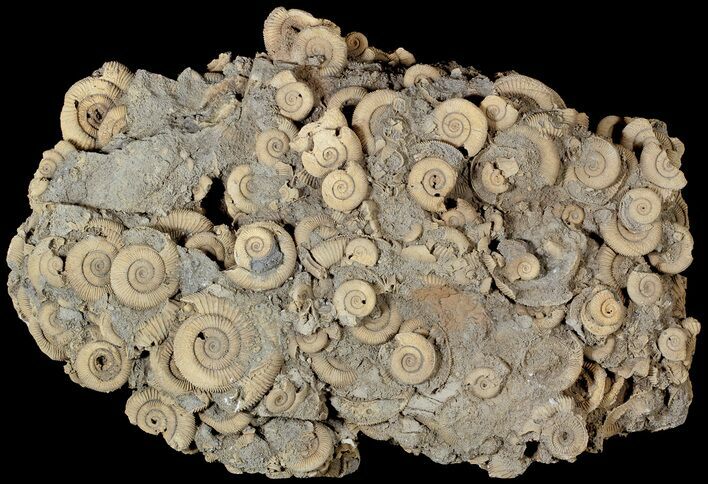This Specimen has been sold.
18.6" Wide Dactylioceras Ammonite Cluster - Germany
This is a very large, free-standing cluster of Dactylioceras ammonites quarried near Forcheim, Germany. It stands 12.3 inches tall and is 18.6 inches wide. There is several dozen ammonites visible on this spectacular piece with the largest being about 3.4 inches wide. Don't miss out on this very aesthetic display.
About Ammonites
Ammonites were ancient marine cephalopods, similar to today's squids and octopuses, but with a defining feature: their distinctive, tightly coiled spiral shells. These shells, resembling those of modern nautiluses, served as both a protective home and a buoyancy aid, allowing ammonites to navigate the prehistoric seas with ease. First emerging around 240 million years ago in the Triassic Period, ammonites thrived for over 175 million years, adapting through numerous forms and sizes. As predatory creatures, they likely fed on smaller marine organisms, using their tentacles to capture prey. However, their long reign came to an end 65 million years ago at the close of the Cretaceous, coinciding with the mass extinction event that also eliminated the dinosaurs.
Ammonites were ancient marine cephalopods, similar to today's squids and octopuses, but with a defining feature: their distinctive, tightly coiled spiral shells. These shells, resembling those of modern nautiluses, served as both a protective home and a buoyancy aid, allowing ammonites to navigate the prehistoric seas with ease. First emerging around 240 million years ago in the Triassic Period, ammonites thrived for over 175 million years, adapting through numerous forms and sizes. As predatory creatures, they likely fed on smaller marine organisms, using their tentacles to capture prey. However, their long reign came to an end 65 million years ago at the close of the Cretaceous, coinciding with the mass extinction event that also eliminated the dinosaurs.
SPECIES
Dactylioceras athleticum
LOCATION
Forcheim, Germany
SIZE
18.6" Wide, 12.3" Tall, 4" Deep
CATEGORY
SUB CATEGORY
ITEM
#63330
We guarantee the authenticity of all of our specimens.
 Reviews
Reviews













